Brands are engaged in a media arms race. Creating relevant and valuable content is no longer an option, but a necessity. Traditional marketing boils down to managing brand information distribution, while content marketing strives to create conditions in which information about the brand spreads on its own.
This article features examples of companies such as Red Bull, Coca-Cola, Pepsi, John Deere, Michelin, Jell-O, and Patagonia that successfully create the tools for broadcasting their messages and engaging their audiences.
Marketing professionals might be familiar with many of the ideas listed below; I have just collected and analyzed them from the side of media theory.
Andrey Miroshnichenko
To offset declining profits, traditional journalism has been forced to turn to marketing in order to accommodate advertisers, while marketing is gradually morphing into journalism. Brands are now operating as media. Moving forward, companies that have nothing to say to their audience will become increasingly marginalized. In just a few years, content marketing, often disparaged as little more than a trend, is expected to become vital for businesses.
Leaping from the stratosphere
On October 14, 2012, Austrian skydiver Felix Baumgartner leapt from his capsule at an altitude of 39 kilometres. During his descent, he set a number of world records, including becoming the first human to break the sound barrier without the aid of a vehicle.
The project, sponsored by Red Bull, was called Red Bull Stratos. The Red Bull Content Pool website, which covers sports, culture and lifestyle, ran a special section, Red Bull Stratos Newsroom, to provide coverage of this project. An eye-catching website dedicated entirely to the project, redbullstratos.com, was also created as a glossy online magazine of sorts.
Red Bull Stratos cost an estimated from $10M to $60M, but its advertising impact may be valued in the hundreds of millions. Over 9 million people watched the live stream of the jump. As of October 15, 2012, a day after the jump, over a dozen YouTube videos on the lead-up and the jump itself had garnered a total of 366 million views. Right before stepping out of the capsule, Baumgartner said: “I know the whole world is watching now.” How right he was.
Red Bull created brand-advertising content capable of spreading on its own.
In February 2013, space tourist and millionaire Dennis Tito launched the Inspiration Mars Mission for America project, which involves sending a two-person crew – a married couple beyond their reproductive age so that space radiation can’t affect their plans to have children – on a 500-day journey to Mars. Tito has started fundraising, including selling media rights. “The Mission for America might become the Red Bull Mission to Mars, the Cool Ranch Doritos Mars Shot,” said Tito (Dennis Tito’s mission to Mars: Launching in 2018 for the children (and to beat China), by Brian Vastag. The Washington Post, February 27, 2013.).
In other words, even a technologically daring venture like a mission to Mars is now viewed as a corporate publicity opportunity. With Red Bull Stratos and the expansion of corporate media ambitions, content marketing has truly reached the stratosphere and beyond.
Brands as producers and event planners
Pictured in the photo is BMX pro Anton Yevstifeev, who has become a niche celebrity thanks to positive media coverage. Red Bull enlisted him as the face of the Red Bull Local Hero project, a regional youth BMX competition. This initiative clearly targets young potential consumers of the energy drink, for whom BMXers are trendsetters.
By seeking out and sponsoring trendy, young extreme sports pros, Red Bull acts like a producer. Promoting niche celebrities and creating media personalities has nothing to do with a hard sell. What it does is create content that attracts audiences to the brand. What’s more, such initiatives create brand ambassadors, i.e. leaders who are appealing to the target audience.
Many have probably heard of the Red Bull Flugtag, an annual airshow in which participants build extravagant homemade flying machines and crash them into a river. The event’s advertising message is clear: Red Bull gives you wings! But there’s also a humorous twist: these wings can’t take you too far. The show isn’t about technical proficiency, but rather celebrating creativity and humour. And it’s quite a spectacle, generating lots of funny images and videos.
Red Bull drinks are probably sold at the event, but, again, direct sales are not the goal. In this respect, the company is acting more like an event planning agency.
Companies are literally operating as media
Many have heard about Baumgartner’s jump from the stratosphere and the Flugtag. Fewer probably know that Red Bull has become one of the first corporations to run a full-fledged multi-platform publishing house.
Red Bull Media House produces a wide range of media products: four magazines (including a glossy magazine, a popular science title, and The Red Bulletin with a circulation of 3.1 million); Red Bull TV, as well as separate video channels for specific projects; online media, including social networking; a music label with a recording studio and online radio; gaming platforms; and film.
As Brian Morrissey from Digiday put it, “Red Bull truly is a media company that happens to sell soft drinks.”
To offset declining profits, traditional journalism is forced to turn to marketing in order to accommodate advertisers, while marketing is gradually morphing into journalism. Brands are now operating as media. But using journalistic tools to achieve marketing objectives has a long history.
Content marketing dates back over a century
The first recognized example of a brand penetrating the world of journalism comes from John Deere, an American manufacturer of agricultural machinery and heavy equipment. In 1895, the company started publishing The Furrow magazine, which targeted farmers and was intended to tell them about the latest farming techniques. This was probably the first time a company created a publication for an entire industry rather than just company employees or customers. “For farmers, it’s the agrarian version of Rolling Stone”, said Kate Gardiner in The Story Behind ‘The Furrow’, (Contently.com, October 3rd, 2013)
The Furrow is still published, with a circulation of over 1 million copies. It is distributed in 40 countries and 12 languages.
The next example comes from the French tire manufacturer Michelin. In 1900, the company started its Red Guide series, a hotel reference guide. The concept was simple: drivers who travel a lot need to know about the best hotels and restaurants. But Michelin didn’t stop there: it started Michelin Green Guides to rate tourist attractions with an emphasis on restaurants, which eventually led to the famous Michelin restaurant guides. But what do tires have to do with any of this? The answer is that the company’s history includes a media dimension.
Here’s another example of a brand getting involved in publishing: in 1904, the American company Jell-O, specializing in gelatin desserts, published its first Jell-O Cookbook. Salesmen gave complimentary copies to housewives who purchased Jell-O products.
It goes without saying that the book’s recipes were based on the company’s products, making it, probably, one of the first examples of “content sampling” in the history of marketing. The Jell-O Cookbook quickly became popular and is published to this day, while previous editions are auctioned on eBay.
Companies build brands by generating content and relying on their own media
As traditional media lose their monopoly in the Internet age, the idea of using proprietary media content instead of advertising to promote brands and products has gained new traction.
A Washington Post article from March 27, 2013, “To build brand, companies produce slick content and their own media,” by Paul Farhi, discusses an important trend that emerged in 2011-2012. Some of its ideas are worth quoting:
“So is the Red Bulletin marketing or journalism? The answer: both.”
“The idea is to engage would-be customers and enhance the sponsor’s image by offering useful information.”
“Consumers don’t care who made [the content] as long as it’s awesome.”
“If you tell great stories, people will do the work for you by distributing it.”
As Howard Gossage, an advertising innovator and colleague of media theorist Marshall McLuhan, famously put it in the 1960s: “The real fact of the matter is that nobody reads ads. People read what interests them, and sometimes it’s an ad.”
What is content marketing?
Brands can now operate as media and speak to audiences directly, obviating the need for traditional media as an intermediary. The Internet has delivered a severe blow to the monopoly of the media on authorship. That said, even without the Internet, marketing has reached a stage in which companies are ready to switch from advertising to new promotional techniques that are based on providing interesting content, not making a commercial offer. This shift from advertising to content marketing is the result of intensifying competition for the attention of the audience. Simply put, as advertising repels audiences (literally) from watching, content marketing is gathering them.
We can go as far as to say that advertising (direct image-based commercial offers) is a product of the industrial age, which was characterized by shortages of goods and services. Content marketing is a tool of the postindustrial age in which goods and services are abundant, resulting in ever-increasing competition among brands to promote their “intangible values.” This competition is even not so much about packaging anymore as it is about myths and emotions. Myths and emotions are created by storytellers, and storytelling is a tool of journalism.
These are the philosophical and historical drivers of the explosive development of content marketing in recent years. The emergence of this new trend in corporate media has been accompanied by changing terminology. The following terms have similar meanings, though with certain nuances:
Advertorial (advertising + editorial)
Infomercial (information + commercial)
Sponsored content
Content-driven advertising
Narrative advertising
Sponsor generated posts
Paid programming
Native advertising
Content marketing
Brand-published information
Brand journalism
If we are so interesting, why not be media?
The corporate world is joining the media arms race. For some reason, storytelling competition is especially intense among soft drink makers. This is possibly attributable to the fact that they are operating in a very flexible market where feedback is almost instantaneous, audiences unstable and market response immediate. Following Red Bulls’ lead, the top beverage brands are providing us with striking examples of switching from traditional to content marketing.
In November 2012, Coca-Cola gave its website a makeover, transforming it into a media platform called Coca-Cola Journey, named after the corporate magazine that was published for the company’s employees from 1987 to 1997. Building on the traditions of the magazine, the company decided to revamp its website as an online magazine for consumers.
The company itself has a very international staff that forms a community of sorts with its own subculture. Coca-Cola executives went further by deciding to place this internal subculture at the core of its media policy. Commenting on this initiative, Ashley Brown, director for digital communications and social media at the Coca-Cola Company, said: “And we thought, ‘Why should our great Coke story stay internal?” (Coke Revamps Web Site to Tell Its Story. By Stuart Elliott. The New York Time, November 11, 2012.
The new website is designed like media with the same sections as an online newspaper or news portal, with information about the company buried in the depths of the website. Even data on corporate leadership is more like a piece of journalism. The editorial approach is used to create website content.
When the goal is to lose control over content
In 2010, Coca-Cola presented two animated video clips on its content marketing strategy. Anyone interested in marketing or business communications in general should watch them.
In this presentation, Coca-Cola makes a case for its “liquid and linked” content concept. The idea behind liquid content is to create ideas that are so contagious that they cannot be controlled. Such liquid content should be so interesting that it provokes consumer conversations without company input or control of the process.
The idea to create content that spreads uncontrollably could be regarded as strange and even risky in terms of traditional marketing. According to conventional approaches, the primary purpose of marketing is to manage information about a brand. New approaches mostly rely on the web’s ability to foster viral processes. From this perspective, marketing is about creating content that people will be willing to share.
Among other things, this new objective changes the economy of marketing. Companies have to pay more for creative content and core platforms, while saving on content distribution, assuming the content is popular of course. Interesting information spreads itself. Content for the Red Bull Stratos project came at a hefty price, but afterward, the media story on the stratosphere took on a life of its own, generating hundreds of millions of contacts for the brand. In terms of the project’s advertising value, Red Bull would never have had the money to stage a conventional advertising campaign that would have reached such a vast audience.
That said, the idea of creating viral content and publishing it online is not new, but it is available to any brand, not just those with the most resources. But Coca-Cola has provided a compelling reason to use viral content and has attempted to create its own vehicle to initiate it.
Social responsibility in brand journalism
Content marketing solutions in one way or another replicate the concept of corporate media outlets. The most widespread preconception about corporate media is that they are biased. This may be true, but in being openly biased they are more straight forward than traditional media that pretend to be independent, while being dependent on advertising money or the government. As a result, consumers can lose sight of the fact that reality as presented by traditional media is distorted, while the shortcomings of corporate media are evident.
The myth about traditional media being unbiased can be dangerous. Being open about one’s subjectivity may actually be more honest and serve society better. “Transparency is the new objectivity,” David Weinberger said.
The second preconception related to the biased nature of corporate media is that it focuses on promoting the brand and is not there to provide accountability journalism. In an article I wrote on brand journalism I suggested that since brands operate as media, they have to compete for audiences in the same way. “As brands become entangled in this competition, they inevitably turn to societal issues. Eventually, they may even start providing accountability journalism, to replace traditional media. That’s how media competition works (including competition among brands).” (Журналистика брендов. Андрей Мирошниченко. / Journalism of brands. By Andrey Miroshnichenko. OpenSpace, 08/04/2011, in Russian.)
Certain statements by Coca-Cola’s media planners (as well as those of Patagonia; more on that later) already tend to prove this hypothesis.
Coca-Cola Journey was presented as a subjective outlet. Ashley Brown, director for digital communications and social media at the Coca-Cola Company in Atlanta, told The New York Times that the company’s new website will be subjective and favorable to the brand. However, Brown acknowledged that they “want to be a credible source.” For this, Coca-Cola Journey may even accept opinions that are at variance with the views of the company. (I can’t help but add that media can only be objective by featuring a wide variety of subjective perspectives, not by spreading the myth of unbiased journalism. What can be impartial is journalism, not a journalist, and only in the case that journalism is diversified.)
The NYT journalist asked if Coca-Cola Journey would accept an opinion column by then-Mayor Michael Bloomberg, who spearheaded restrictions on the sale of large sugary drinks in New York in 2012 in an effort to improve public health, which delivered a severe blow to the soft drink industry. Ashley Brown’s response? “Anything’s possible. If you want to mention that to Mayor Bloomberg, I would give you my e-mail. We have a belief here that not shying away from tough decisions is a good thing and gives us credibility,” he said.
This could be true: corporate media publishing a debate with an opponent is intriguing. It shows that the company has reached a certain level of media maturity, and its media is becoming socially responsible. It is in this way that the social mission of journalism, as well as interesting content, could move from a traditional to a corporate media format.
Refining suitable content
Also in 2012 (in March), Pepsi made similar changes to its website (proving yet again that soft drink brands have an edge in content marketing). Their effort was also about revamping the corporate website, transforming it into a media outlet called Pepsi Pulse to cover entertainment, sports, pop culture, etc.
Not only did the two projects, Coca-Cola Journey and Pepsi Pulse, implement new media marketing approaches, but they also found new and interesting ways to present their brands’ philosophy.
Coca-Cola Journey’s open approach is in many ways inspired by the very concept of subjectivity, which easily translates into such values as individualism, consumerism, and the pursuit of individual pleasures, while creating a favourable emotional context for promoting the beverage brand. This implies that the purpose of the media is to benefit a brand even if subtly.
Pepsi found an even more elegant solution for its Pepsi Pulse project. The company slogan is well known: Live for Now. Pepsi Pulse is built on a curation engine, a solution based on a back-end scoring system, which aggregates the most interesting, discussed, liked and widely spread content across social networks and other sources. The project is focused on topics relevant to its target audience: sports, entertainment, pop culture, etc. Posts and tweets by fans, the latest articles, photos and videos are presented in a vibrant and attractive format.
Those behind this project called the desired effect the “now factor.” The company’s website aggregates all the latest and most discussed reports on a number of topics, providing its audience with all the buzz in the world of pop culture, sports, and entertainment. Live for Now. The fact that this is a concept for a “youth media outlet,” rather than a corporate website, cannot be ignored.
New media are not a platform. They are about engaging instead of broadcasting
This new media concept is a state-of-the-art model. In certain respects, Pepsi Pulse is even more novel than Coca-Cola Journey, since the latter is still limited to communicating messages from opinion leaders “down” to its audience, while Pepsi Pulse offers a distilled selection, including “horizontal”, i.e. user-generated content.
The key difference between traditional and new media is that the former tends to broadcast “top-down”, while the latter is focused on engaging audiences. Major media outlets are proactive in adapting to this paradigm shift by providing their readers with the possibility of participating in content creation. Why? A contributor is more likely to be loyal than a simple consumer. A person who invests time, talent, skill or money into a brand (product, content) will be loyal to it. (See “Broadcasting vs. Engagement”, a chapter from Human as Media. The Emancipation of Authorship, 2014. By Andrey Miroshnichenko.)
The same goes for corporate media. Patagonia, an outdoor clothing and gear maker, provides an example that could be useful for traditional media. The company created a bare-bones, classic blog (a sequence of posts) called Worn Wear. True stories of people and their Patagonia gear. Its posts are written as letters by consumers who use Patagonia products, and start with “Dear Patagonia,” followed by a story. For example, I bought a Patagonia vest in 1987, spent a night in it in the Rocky Mountains, escaped from a grizzly bear in Alaska, caught salmon, etc.
The stories are accompanied by user photos of the writer hiking or having an adventure. All the stories are generally well written. Reading them even gave me the impression of reading a Hemingway short story about fishing, such as the Big Two-Hearted River.
Patagonia’s approach resulted in a “people-created” collection of stories on travelling with Patagonia, and is a good read. Writing for this blog (and being published there) should be an even greater pleasure. People love to share their experiences and upload photos. Everyone is eager to share their impressions of an exciting journey. The brand, like a virus, is built into this content. (Patagonia also runs another “weblog for the employees, friends and customers of the outdoor clothing company Patagonia”, which is devoted to adventures and the environment: The Cleanest Line)
Who cares if the content is biased towards the brand? On the contrary, people often thank the company for great products and for the very idea to offer its consumers an opportunity to share their impressions of their beloved, albeit worn, gear.
The fact that these stories are edited is apparent. However, every once in a while you see pearls that could not have been created by a copyrighter. For example, “Dear Patagonia, I’m a mid-90’s Puff Ball pullover down jacket, and I’m no longer acceptable wear in a social situation. My compadre, Jimbo, and I first joined forces many adventures ago. I was shiny and bright-red, less-so now, but then, hey, he was a little less-worn 15 years ago too…”
Corporate content and corporate mission
The importance of having a blog about old travel clothing and gear written by consumers becomes obvious in the context of the brand’s overall strategy. Patagonia is known for implementing a number of environmental initiatives, such as helping to reduce pollution across the world by making longer-lasting products. If an item can be used for an extended period of time, customers buy replacements less frequently, reducing the need to manufacture new goods along with pollution levels. Products must be durable, reliable and comfortable, so that people get used to them and don’t want to change. Patagonia has made a cult out of its used jackets and bags.
Such a marketing concept might seem counterintuitive in this day and age. It is obviously at odds with the dominant mindset in the marketing industry, which strives to force consumers to buy new things as often as possible. “Patagonia isn’t about following the norm”, writes Giselle Abramovich in Inside Patagonia’s Content Machine. (Digiday, January 31, 2013.)
But while Patagonia’s “buy less, use longer” concept (as I would call it) clearly goes against the grain, it has resonated with many consumers, especially nature lovers. People become very attached to their old, worn-out clothes that carry so many memories; wearing them becomes a habit. This strategy also likely has a business dimension, since it enables the producer to charge more for things that are expected to last longer, though consumers also benefit from buying less. That said, it is not the economic rationale behind this concept, but its philosophy that makes it appealing. The Worn Wear blog brilliantly embodies this philosophy.
This concept could be extended to consumer stories about their first car, cellphone, etc. Any consumer story can be branded. With the right editorial approach, people can be encouraged to share their thoughts about things they love – things that served them well and carry warm memories.
This is where this infamous media engagement effect comes into play. Not only are people coaxed into distributing corporate content (as in the Coca-Cola Content 2020 concept). They are also creating extremely interesting and already branded (!) content for the company and reinforcing their brand loyalty.
Evaluating the success of content marketing
Creating and curating content, enlisting users in distributing and creating content the brand needs – these are the objectives of content marketing.
While the amazing opportunities offered by content marketing understandably inspire enthusiasm, the perennial question of how to measure its commercial impact should not be overlooked.
Gauging the effect of content marketing on sales is one of its main challenges. The easiest option is to look at the sales of a product after each campaign or article publication. However, sales trends do not always correlate with marketing efforts. It is often hard to say whether it was the new article or the quality of the product that was behind higher or lower sales.
Media measurement tools popular among marketing experts working on the media dimension of brands – including audience size, number of clicks and link popularity – are useful for measuring media efforts, but say little about the overall effect on the business.
Another way of measuring commercial impact has to do with the fact that companies with sophisticated media operations have a good reputation, which enables them to cut costs related to attracting talent. People want to work for companies with solid brands. But this is an indirect, tangential measure.
The best way to measure the impact may have less to do with gauging positive changes generated by content marketing, than analyzing the negative consequences when it is not used.
In the media arms race, companies not only can but must create content. Given the omnipresence of media, establishing a presence in the public space is no longer an option, but a necessity for businesses, especially for B2C companies. At the dawn of the Internet age, this “mandatory publicity” effect was simple: if a consumer wanted to buy a product from the company but was unable to find it online, the purchase would not take place. If you weren’t on the Internet, you weren’t on the market.
In today’s world, where the lines between companies and media are becoming increasingly blurred and brands are engaged in media competition, the situation is becoming more complex: to stay relevant, companies now have to offer users interesting content. Moving forward, companies that have nothing to say to their customers or that do it poorly will lose out. In a few years, content marketing, often disparaged as little more than a trend, will have become vital for businesses.
Content marketing tools
There are so many content marketing tools that it would take several workshops to go over all of them. The general idea is that companies have to master journalism techniques and editorial approaches. These techniques and approaches have been devised and refined throughout the 400-year history of media. Also, it is important to follow the latest efforts of major media outlets which themselves are now being forced to change the way they operate under pressure from the Internet and social media, which make everyone a publisher.
With this in mind, companies should adopt the best practices of old media, while keeping an eye on new engagement tools offered by new media.
Curiously, it is the most advanced companies that are leading the way in media innovation. One could even argue that companies could soon replace traditional media as the leading media innovators, since they have the resources and the need to develop, while old media are merely fighting for survival.
“Red Bull truly is a media company that happens to sell soft drinks” – this Brian Morrissey’s quote embodies the philosophy that is turning companies into media. This is the way it is. Companies create content aimed at fostering an environment in which the company’s services, goods or offers becomes desirable, trendy or even inevitable.
What are these editorial techniques? Primarily, it is about establishing multiplatform editorial “newsrooms” for managing corporate content. While such editorial mechanisms are nothing new, they have to be adapted to the brand’s needs. For example, editorial calendars are a basic tool used by media editors to implement editorial policy (the brand’s media philosophy), which includes selecting relevant topics, outlining ways to present it, determining the volume, choosing an author, setting deadlines and deciding which platforms to publish on.
Another option is storytelling, which is about creating high-quality and appealing brand stories without forcing the audience to read them.
The next step is to use engagement techniques so that the brand audience not only consumes branded content, but becomes engaged in distributing and creating it. The reader becomes even more important than the speaker. This bold thesis violates the age-old traditions of corporate positioning. Most corporate communications formats, from websites to corporate newsletters, are defined by the company (publisher, sponsor). Many corporate media outlets still provide coverage of the company or its product and not what its audience really wants. This profound difference can be illustrated by a corporate newsletter, which should run letters from readers on its front page instead of an interview with the CEO. Metaphorically speaking, the front page of any corporate outlet should carry users’ stories, not an interview with the CEO. The Internet has emancipated authorship, and those will win who provide so-called “former audience” (Dan Gillmor’s term brilliantly used in his book We the media for the chapter’s title “The Former Audience Joins the Party”) with a branded platform for publishing. According to this approach, all corporate communications mechanisms should be flipped inside out.
Finally, there is another important technique that can be borrowed from traditional media. Mass media strive to squeeze all global developments into a compact agenda by getting rid of extraneous information, compressing and unifying content. This is what journalism is all about, and this is what the news business has been paid to do over the last 400 years. The world as presented by the media is filtered through editorial policies. By morphing into media, brands can use this mechanism to present the world in line with its corporate objectives, while keeping it interesting for audiences and even reflecting, sooner or later, their social needs.
The review was made in March, 2013. First published in Sept, 2013 (in Russian).
Author of Human as media. The emancipation of authorship – available on Amazon
To follow on Twitter – @Kazhdy
References
Red Bull Stratos And Felix Baumgartner Breaking Real Life and Social Media Records. By Maximilian H. Nierhoff. Quintly, October 16, 2012.
Why did Red Bull sponsor the Stratos Mission? Quora, 16 Oct, 2012.
What Red Bull Can Teach Content Marketers. By Brian Morrissey. Digiday, October 15, 2012.
Red Bull Stratos Worth Tens Of Millions Of Dollars In Global Exposure For The Red Bull Brand. By Darren Heitner. Forbes, 10/15/2012.
Dennis Tito’s mission to Mars: Launching in 2018 for the children (and to beat China). By Brian Vastag. The Washington Post, February 27, 2013.
The Story Behind ‘The Furrow’. By Kate Gardiner. Contently.com, October 3rd, 2013.
When it Comes to Content, Honesty is the Best Policy. By David Murray. McMURRY/TMG, September 11, 2014.
To build brand, companies produce slick content and their own media. By Paul Farhi. The Washington Post, March 26, 2013.
Coke Revamps Web Site to Tell Its Story. By Stuart Elliott. The New York Time, November 11, 2012.
Coca-Cola Journey – Why We’re Here. By Ashley Brown. Coca-Cola Journey, Nov 12, 2012.
The Viral Editor as a distributed being of the Internet. The Manifesto of the Viral Editor. By Andrey Miroshnichenko. Human as Media, November 13, 2013.
Pepsi.com Pushes Content for ‘Live For Now’ Campaign. By Kylie Jane Wakefield. Contently.com, June 29th, 2012.
Big Content Marketing Plays From Coke, Pepsi and Red Bull. By Mark Sherbin. Content Marketing Institute, November 18, 2012.
Inside Patagonia’s Content Machine. By Giselle Abramovich. Digiday, January 31, 2013.
Other useful links on content marketing
4 Reasons Why Content Marketing is Scaring the Pants Off Media Companies. By Joe Pulizzi. Content Marketing Institute. January 26, 2013.
6 Amazing Retail Content Marketing Examples. By Joe Pulizzi. Content Marketing Institute. April 26, 2012
Content Marketing Strategy: How to Engage Influencers in Your Industry. By Joe Pulizzi. Content Marketing Institute. March 23, 2013.
Creating Engaging Content: 3 Calls to Action that Get Conversions. By Megan Brown. Content Marketing Institute. March 20, 2013.
Every Company Is A Media Company… By Tom Foremski. Silicon Valey Watcher, April 6, 2010.
Say Hello to the CEO: Chief Editorial Officer? By Kyle Austin. RaceTalkBlog, March 25, 2009.
The Real Marketers Shift From Social Media to Content Marketing. By Aaron Kahlow. Intweetiv, November 14, 2014.
Five Journalism Habits Brands Should Avoid. By Craig Silverman. Sparksheet, 2013/05/15.
Contentology. The art and science of content.
From Content Marketing to Brand Journalism. Curated by Andrey Miroshnichenko. Scoop.it.
The Formula for Creating Ridiculously Good Content: Q&A with Ann Handley. Featuring Ann Handley. Openviewpartners.labs. November 18, 2014.
See also books by Andrey Mir:
- Digital Future in the Rearview Mirror: Jaspers’ Axial Age and Logan’s Alphabet Effect (2024)
- Postjournalism and the death of newspapers. The media after Trump: manufacturing anger and polarization (2020)
- Human as media. The emancipation of authorship (2014)
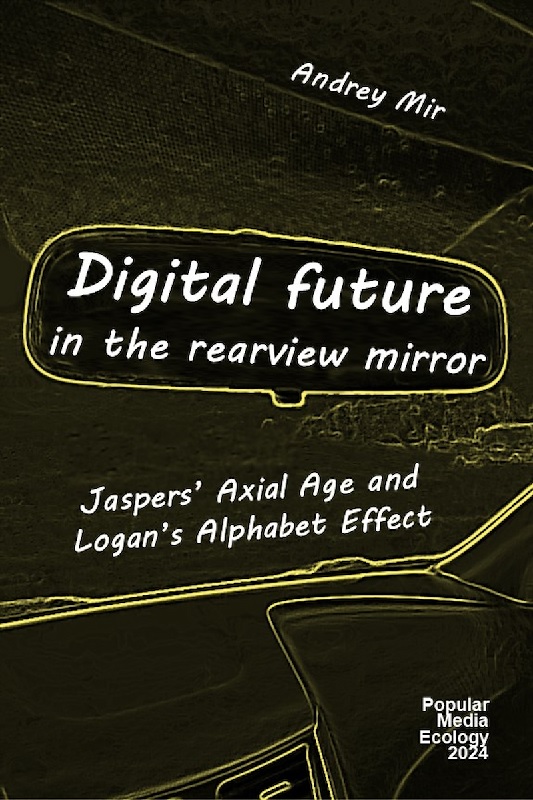

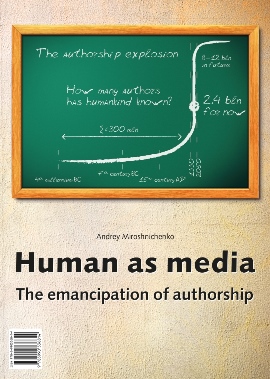
Categories: Content marketing, Corporate communication, Emancipation of Authorship, Future of journalism

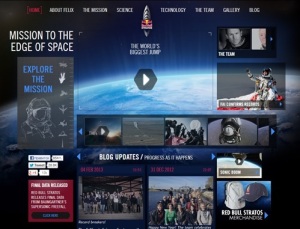


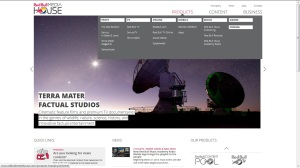
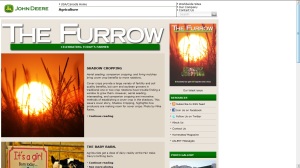
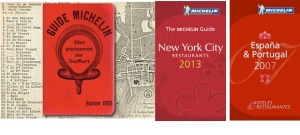
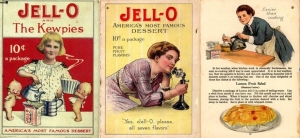
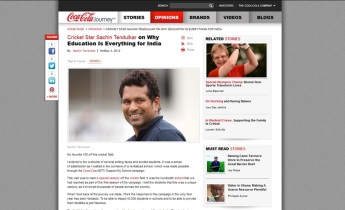
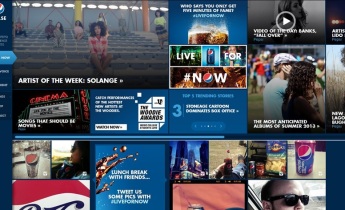

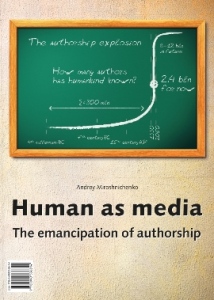
Leave a comment